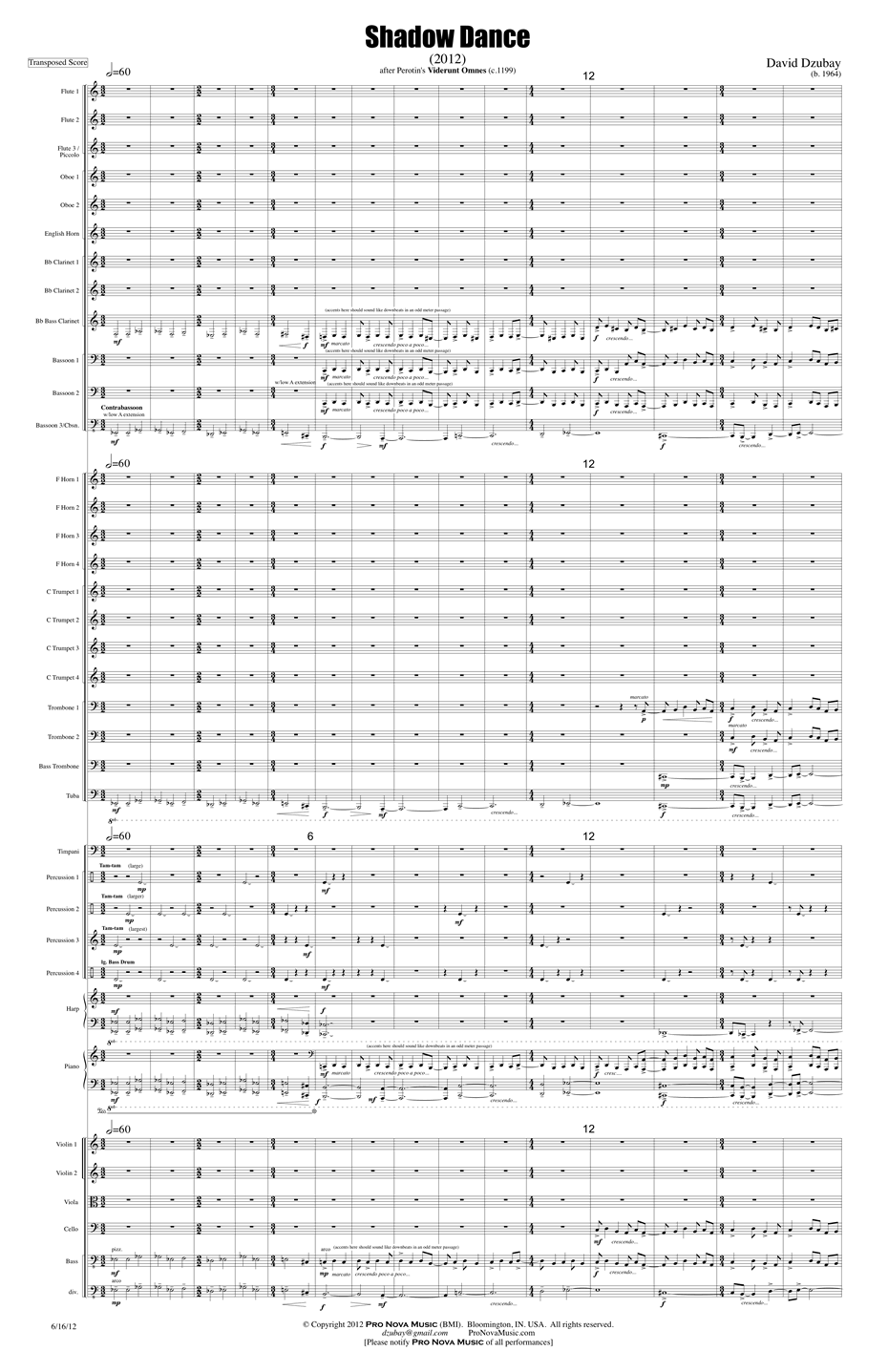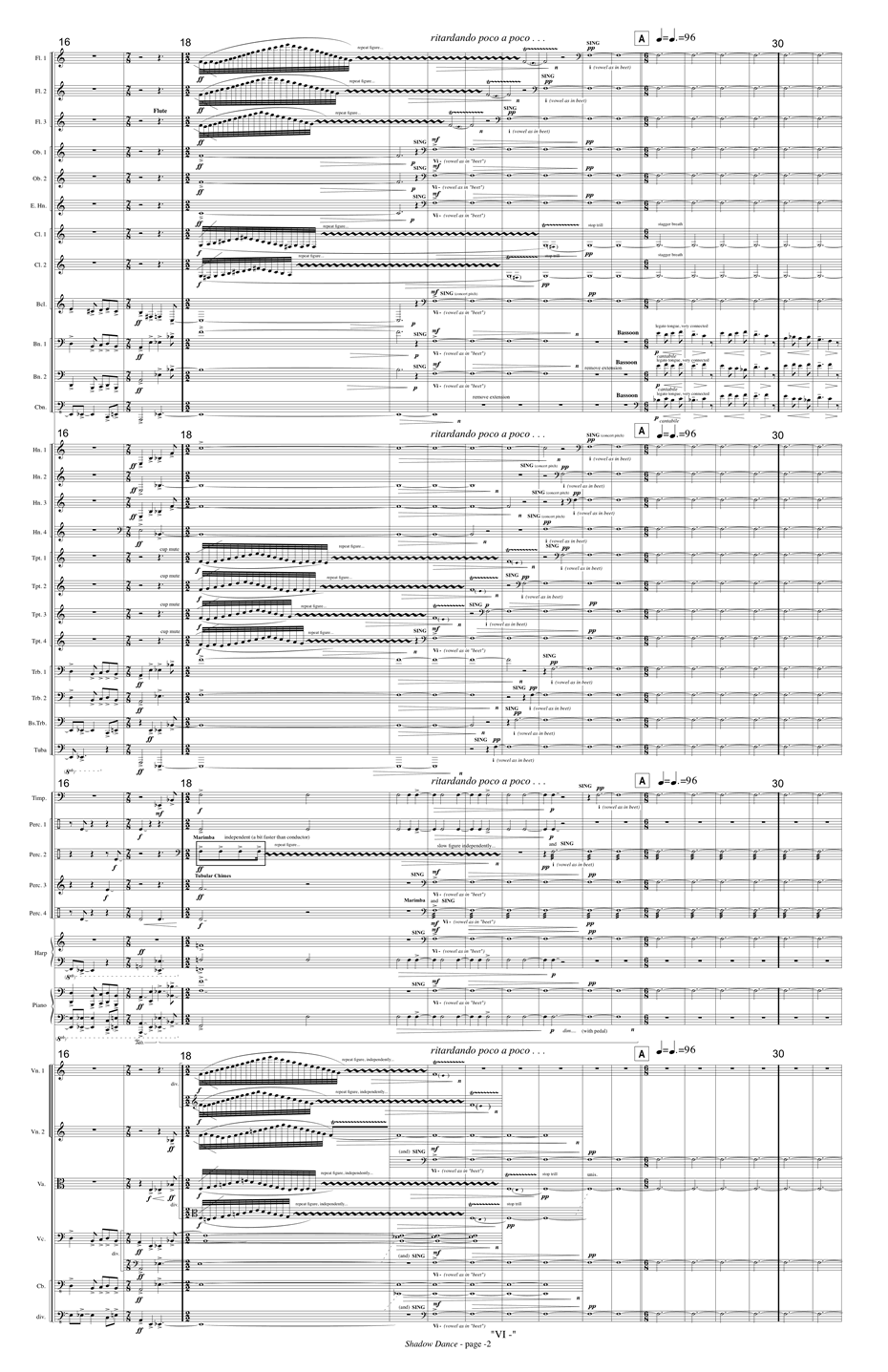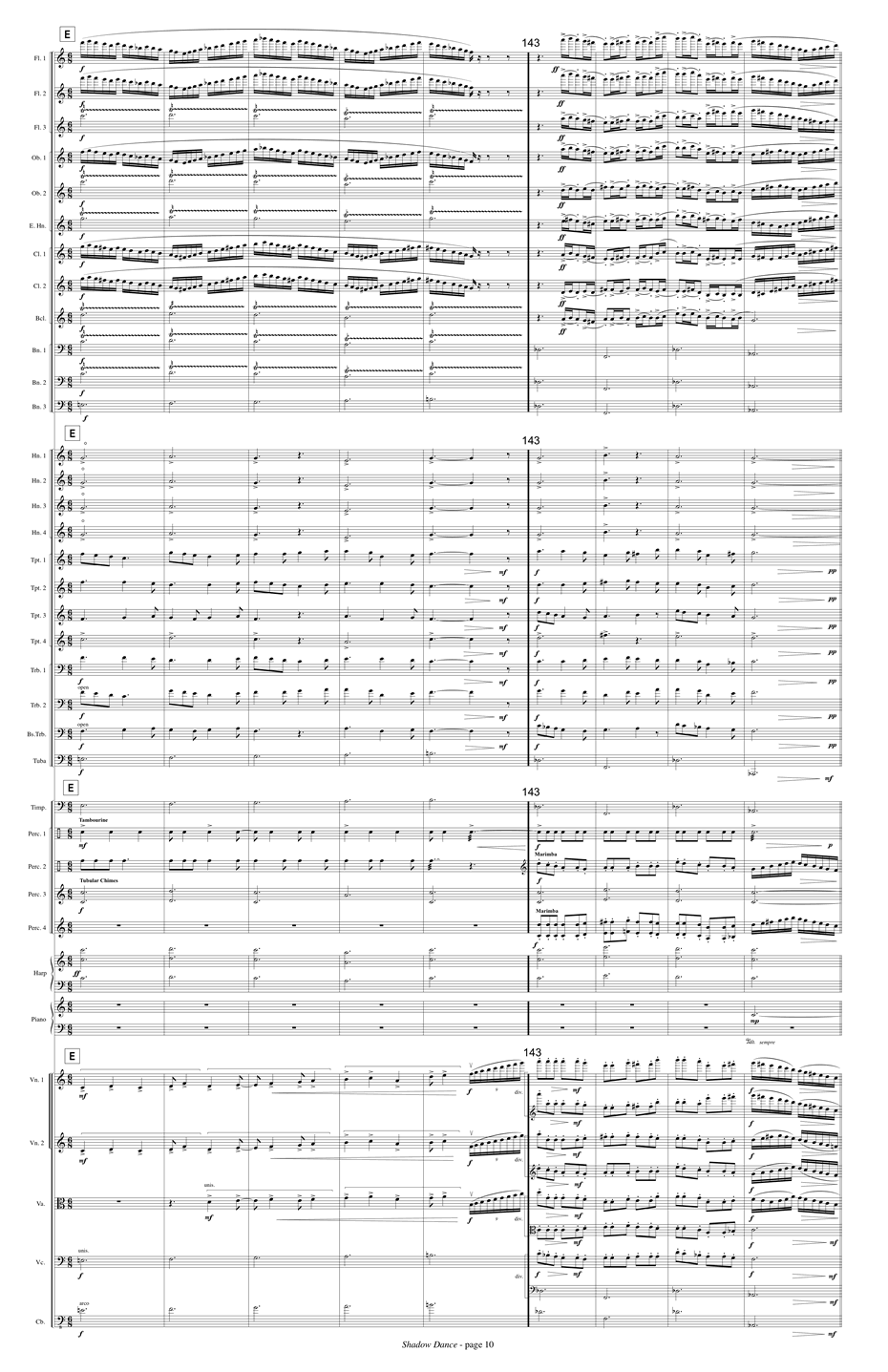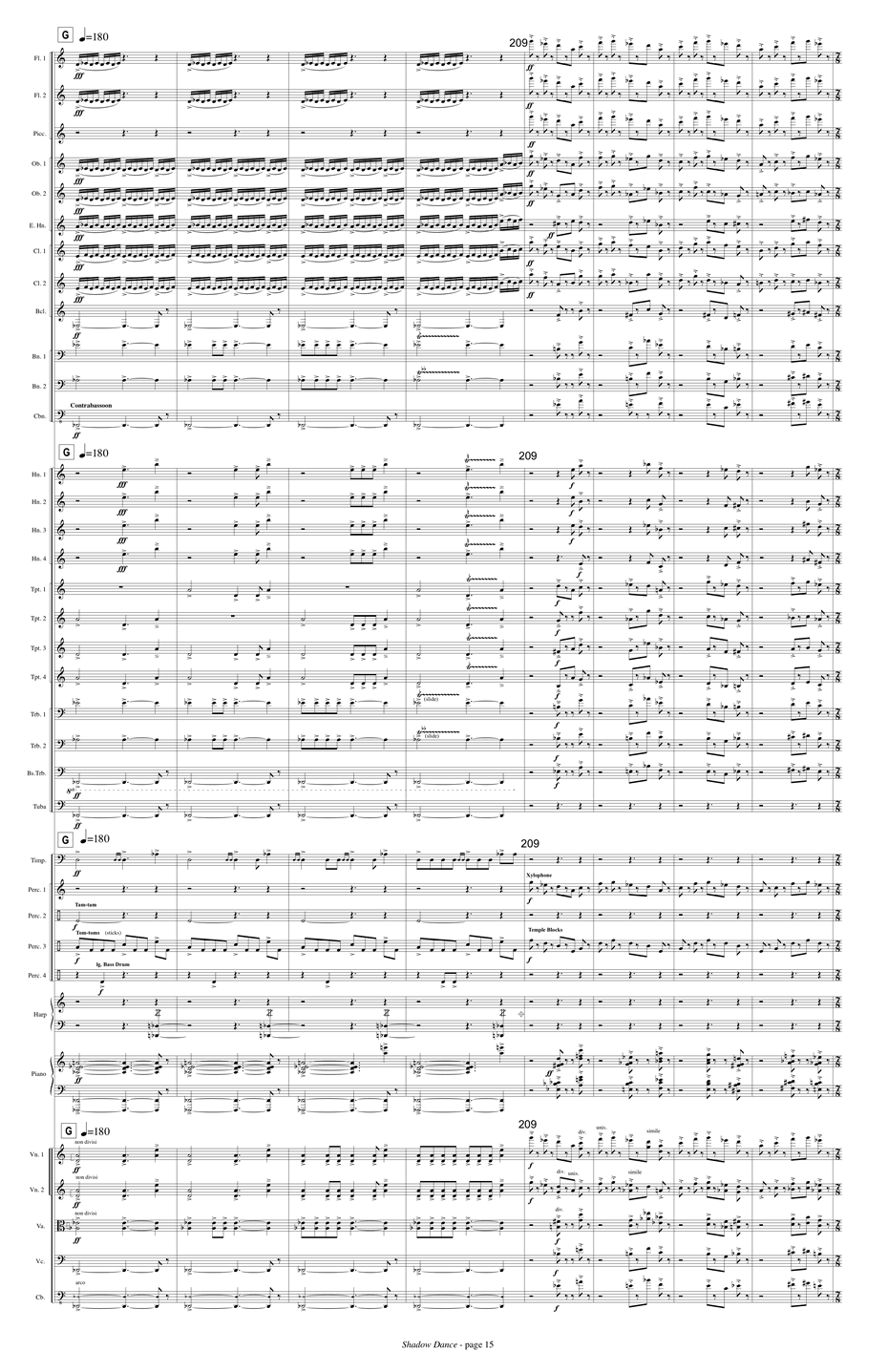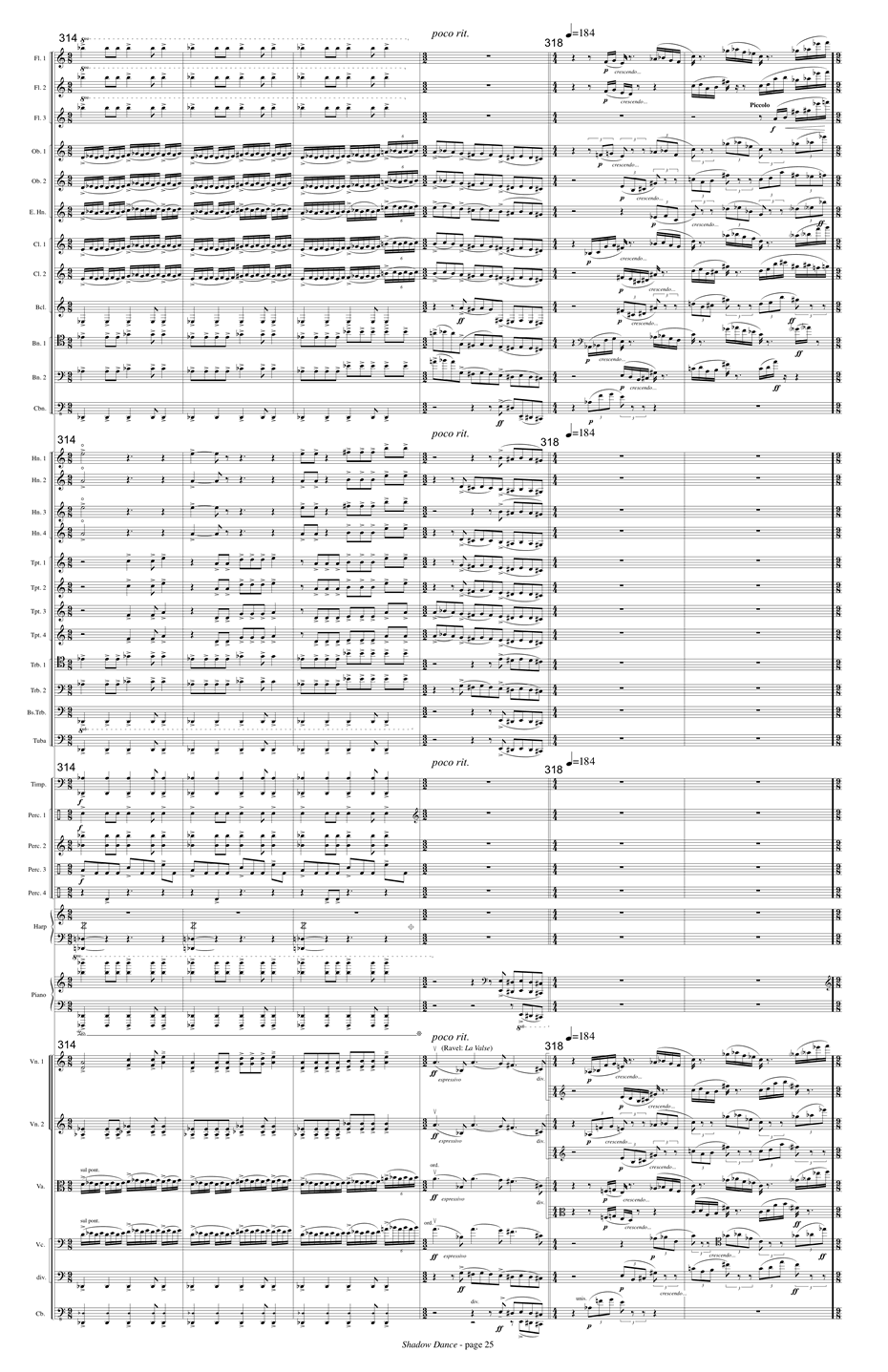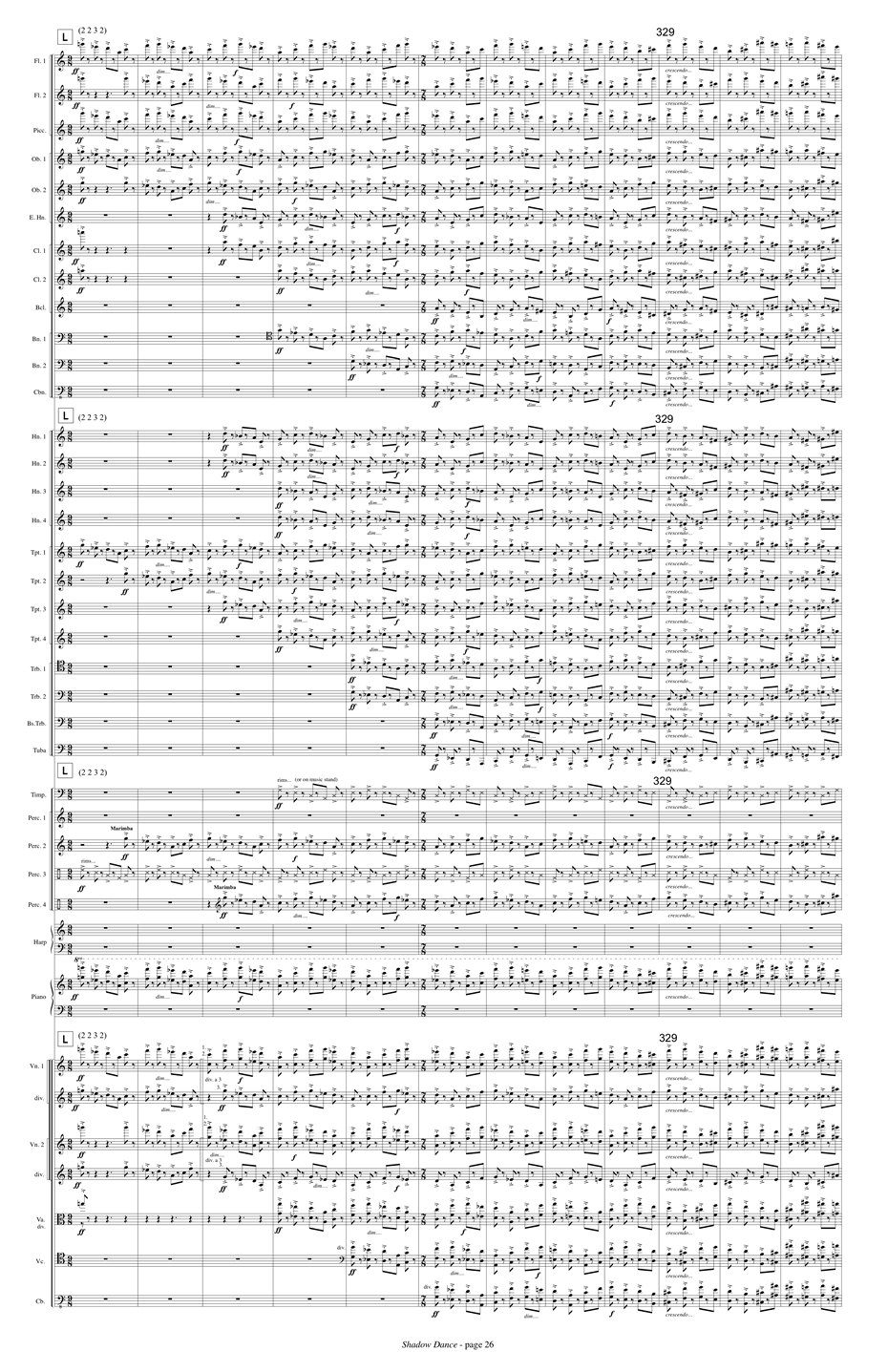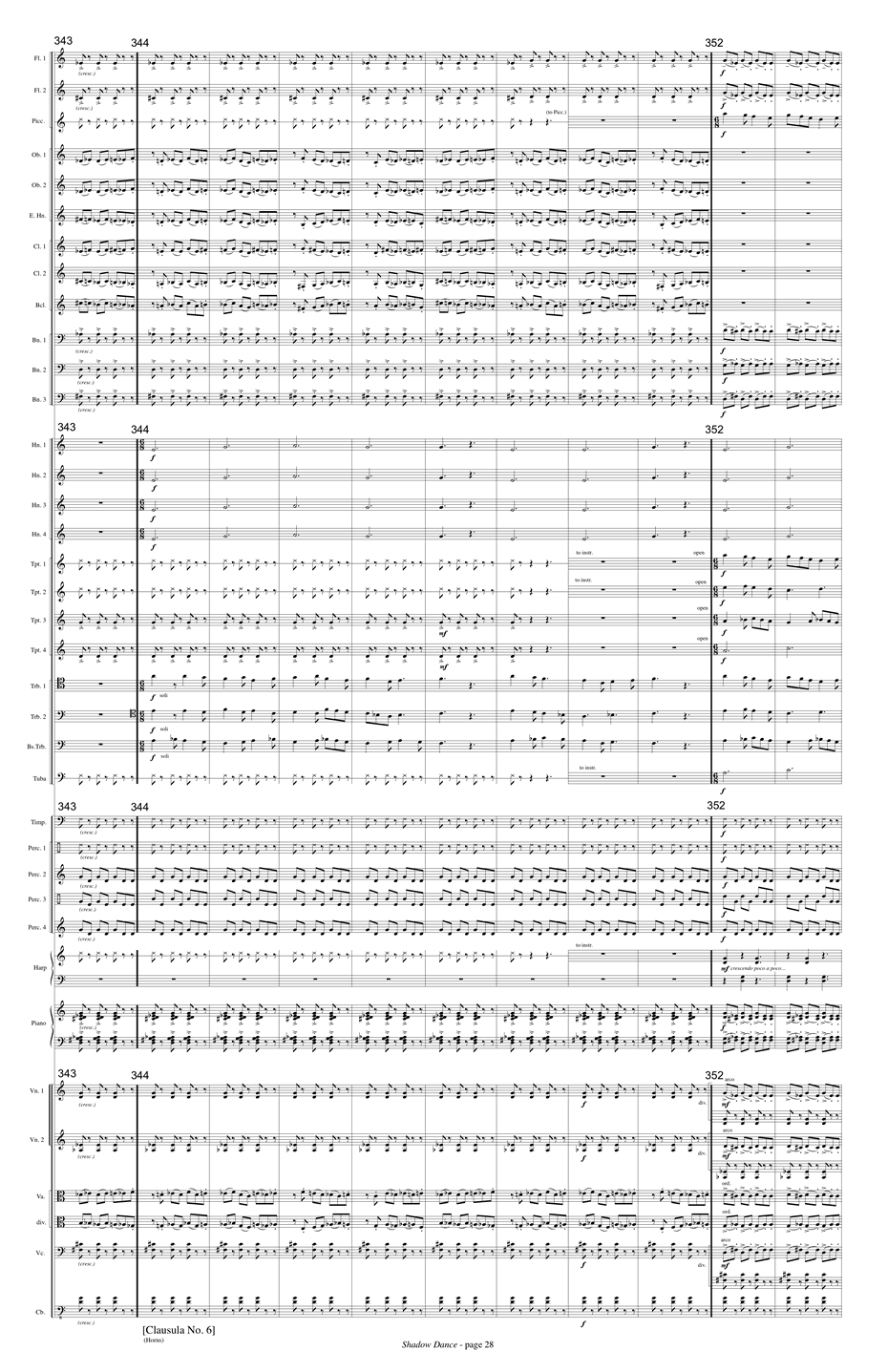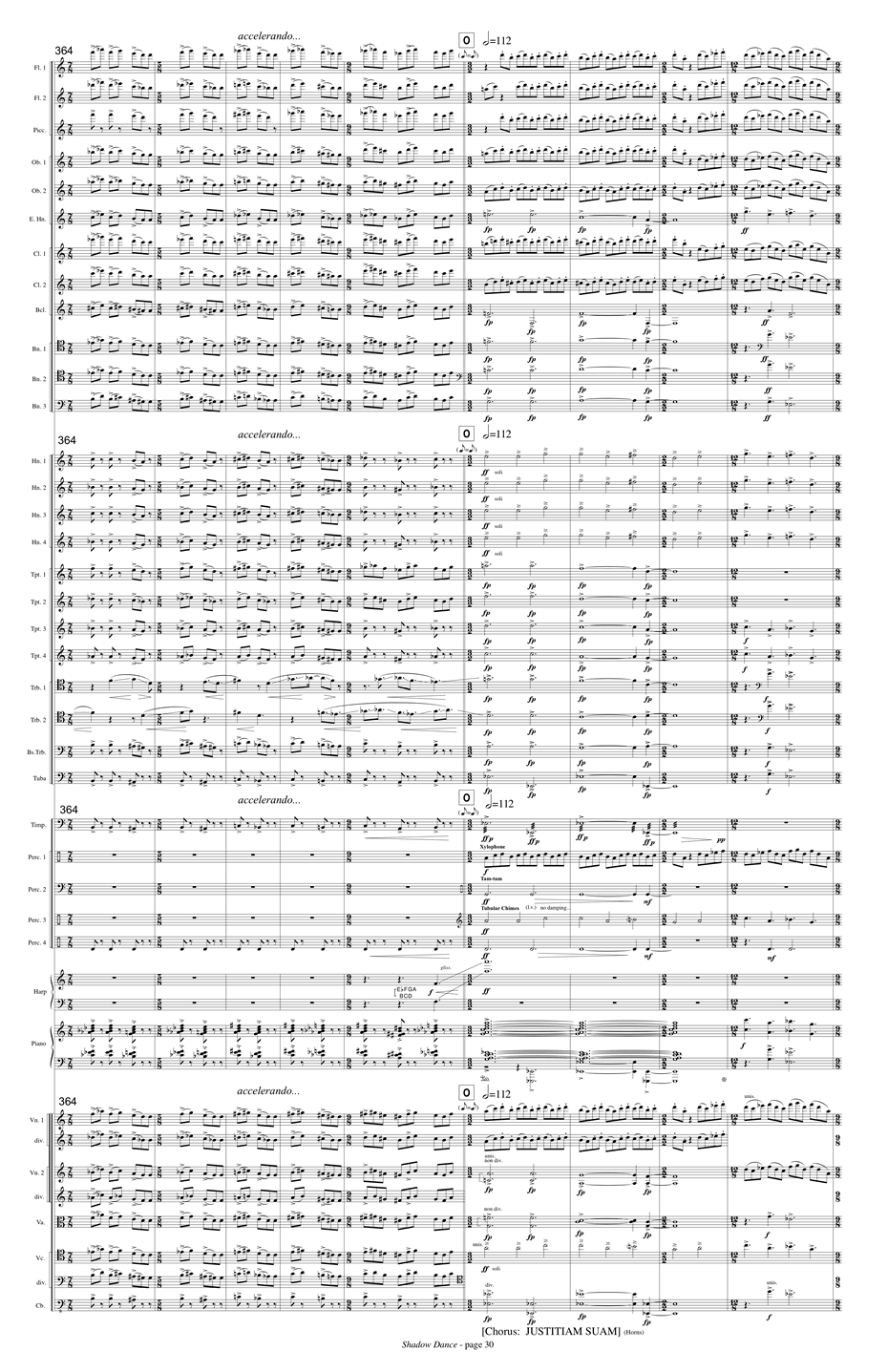Shadow Dance
(2012) for orchestra
instrumentation:
3(3+pc)333(3+cbn)/4431/timp.4perc.hp.pno/strings
duration: 9 minutes
premieres:
1999: Minnesota Orchestra, David Alan Miller, July 14, 1999
(in previous version, called Last Dance)
2002: IU Symphony Orchestra, Christopher Larkin, Feb. 9, 2003
2012: Brevard Music Center Orchestra, Keith Lockhart, Aug. 5, 2012
Perusal Score

Recording
 Innova 634 American Midlife
Innova 634 American Midlife
Slovak Radio Symphony Orchestra, David Dzubay
(2002 version)

Program Note
“All things… are aggregates of atoms that dance and by their movements produce sounds. When the rhythm of the dance changes, the sound it produces also changes… Each atom perpetually sings its song, and the sound, at every moment, creates dense and subtle forms.” (Alexandra David-Neel, Tibetan Journey, London, 1936.)
Perotin, a choirmaster at the cathedral of Notre Dame, composed the first known works of music written in four parts at the end of the twelfth century. His Viderunt Omnes, circa 1199, is an organum based on a Gregorian chant sung at both Christmas and New Years. Perotin’s organum can be thought of as a lengthened shadow of the original chant. That is, individual notes of the chant are sustained in the bottom part for long periods of time, during which the three upper parts have active melodic sequences, often with a rather dance-like lilt. The upper parts playfully shadow each other with imitative melodic lines in the same register, constantly crossing back and forth. Contrasting with the sustained-note sections are more active discant sections, called clausulae, where the bottom part is also rhythmically active.
Shadow Dance, then, is a further shadowing of the chant, taking Viderunt Omnes as a base, or cantus firmus, and adding newly composed music above, below, and in between phrases of the Perotin, which is most evident during the first half of the composition. At the midpoint, “the rhythm of the dance changes” and the Perotin recedes, except for momentary glimpses back in time. Players in the ensemble are asked to sing portions of the original chant, namely the first and the last two words - Viderunt, and justitiam suam. Like the age in which we live, the character of this dance is unstable: by turns ominous, peaceful, celebratory, reflective, frantic, joyful, raucous, anxious, hopeful.
Text:
VIDERUNT OMNES
Viderunt omnes fines terrae salutare Dei nostri
Jubilate Deo omnis terra
Notum fecit Dominus salutare suum:
ante conspectum gentium revelavit justitiam suam
All the ends of the earth
have seen the salvation of our God.
Rejoice in the Lord, the whole earth.
The Lord has made known his salvation;
He has shown his righteousness in the sight of the people


